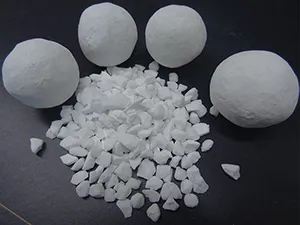Glass beads, produced from crushed glass and flat glass materials, are processed into spherical shapes through high-temperature melting. Known for their low thermal conductivity, high strength, and excellent chemical stability, glass beads feature smooth surfaces, uniform sizes, high hardness, and abrasion resistance.

Brown fused alumina is produced by melting high-quality bauxite, iron filings, and anthracite in an electric arc furnace at high temperatures.
Black silicon carbide is produced by smelting quartz sand, petroleum coke (or coal coke), wood chips, and other raw materials in a resistance furnace.

Tabular alumina is a pure sintered alumina, thoroughly calcined without the addition of any additives such as MgO or B2O3. It boasts a coarse, well-developed α-Al2O3 crystal structure, with an Al2O3 content exceeding 99%.

Boron carbide is produced through high-temperature smelting of boracic acid and carbonaceous materials in electric furnaces. It boasts a theoretical density of 2.52g/cm3, a melting point of 2450°C, and a micro hardness of 4950kgf/mm2.